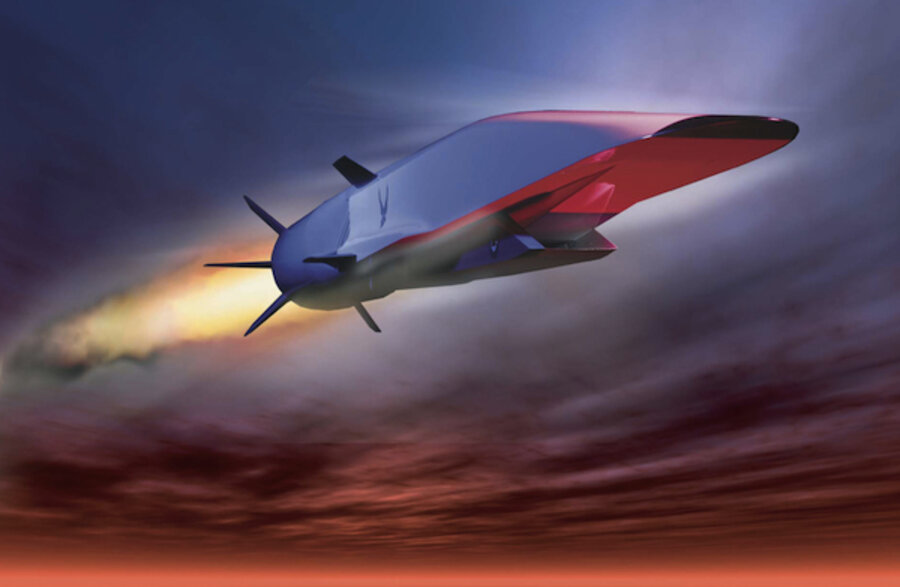Hypersonic X-51A WaveRider nosedives in Pacific Ocean
Loading...
The X-51A Waverider, an unmanned scramjet aircraft currently being tested by the US Air Force, took a nose dive into the ocean yesterday – the third major failure for the much-hyped Mach 5 missile. According to Wired, the X-51A was supposed to go hypersonic (more than five times the speed of sound) for 300 seconds.
Instead, a failure of the control fin caused the missile to spiral out of control before the engines could really kick in.
From Wired's Danger Room blog:
The Air Force launched the missile over the Pacific sometime between 10 a.m. and 11 a.m. Tuesday from a B-52 Stratofortress based at Edwards Air Force Base in California. Traveling at 50,000 feet, the B-52 was to launch the missile, which would then scream across the Pacific at hypersonic speeds. The missile got away from the B-52, but then flopped uncontrollably into the ocean.
The Air Force has confirmed the failure. "It is unfortunate that a problem with this subsystem caused a termination before we could light the Scramjet engine," Charlie Brink, the AFRL's X-51A program manager, told FlightGlobal.com. "All our data showed we had created the right conditions for engine ignition and we were very hopeful to meet our test objectives."
Developed by Boeing, the X-51A is built to reach speeds of up to 4,600 miles an hour, ABC News reports – or approximately six times the speed of sound. The name, Waverider, refers to the ability of the craft to ride the shockwaves created by the scramjet engines. But before yesterday, the X-51A had already twice failed to get up to speed, Wired has said. It remains unclear whether the AIr Force will schedule a fourth test run.







